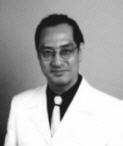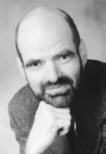WingTsun is trained in a group, but individually. The skills of the individual are promoted and expanded.
History of WingTsun
WingTsun teachers are against all forms of violence. WingTsun is pure self-defense.
WT teachers pass on their knowledge in a relaxed atmosphere based on partnership.
Defense skills can be learned through concentrated and regular training.
The focus is on a unique and multifaceted technique that can only be learned through concentrated practice and conscious involvement. Flowing movements and sudden speed merge into one another in a systematic and coordinated sequence of movements. They merge into a new and powerful unity. The systematic learning of WingTsun increases physical and mental flexibility and promotes perception. Targeted relaxation and concentration techniques as well as breathing exercises complete the path to “refuel” the body.
WingTsun builds on the existing potential of the students. It is not muscle strength and fitness that are the prerequisites for WingTsun, but the willingness to get involved with your body, get to know and use its strengths. The training focuses on the learning of a coordinated and healthy movement as well as a sharper perception.
Anyone who learns WingTsun develops a new understanding of the body and a new self-confidence. Intensive training gives the students more security, they become aware of themselves and their possibilities.
This newly developed self-confidence and the physical being-with-oneself leads to a new attitude towards life. Personal restrictions no longer play a major role in everyday life. Life is more diverse and livelier. WingTsun students leave the “victim role” and are therefore less likely to come into dangerous situations.
And if it does, they have effective, weaponless technology. WingTsun is consistent self-defense. WingTsun absorbs the attacker’s strength, redirects it into his own strength, reinforces it and directs it against the attacker.
This process is similar to the game of chess. The chess player is one with his pieces and instinctively knows his next move because he has thought through the actions of his opponent in advance. So also the WingTsun student: In action he uses his reflexes immediately.
History of WingTsun
We would like to point out that the following story is a legend and shortened in its form by us. We have most of the information from the book “The History of the Yip-Man WingTsun Style” (available from Wu Shu – Verlag Kernspecht). One can really argue about the truth of the legend, but the story is documented from Leung Jan.
After the Shaolin Monastery in China was destroyed, Buddhist Master Ng Mui settled in the Temple of the White Crane on the slope of Tai Leung Mountain. There she got to know Yim Yee and his daughter Yim WingTsun, from whom she often used to shop on her way home. The beauty of the young Yim WingTsun attracted a city-famous thug who tried to force her to marry him under the threat of violence. When Buddhist master Ng Mui heard about it, she took pity on WingTsun and accepted her as a student. She promised to teach her the art of fighting so that she could get rid of the bat herself. When she mastered the techniques her Ng Mui taught, she challenged the bat to fight and defeated him. Then Ng Mui left WingTsun and continued her journey through the country.
From this report it can be seen that the WingTsun comes from the Buddhist nun Ng Mui and the name of the system from the first student.
After the wedding, Yim WingTsun then passed the system on to her husband Leung Bok Chau, who in turn taught Leung Lan Kwai. Leung Lan Kwai then taught this art to Wong Wah Bo, a member of an opera company on board a red junk. Among Wong Wah Bo’s comrades on the Red Junk was a certain Leung Yee Tei, who had learned the six-and-a-half-point long-stick technique from a cook on the ship. In the end it turned out that the cook was none other than Chi Shin, who had also fled the burned Shaolin monastery. The close cooperation between Wong Wah Bo and Leung Yee Tei led to the transfer of information from one kung fu style to another and ultimately ended with the above-mentioned long-stick technique becoming part of the WingTsun system. Leung Yee Tei then taught Leung Jan, a famous doctor from Fatshan City. Leung Jan learned all the secrets of this art and achieved the highest level of perfection. Challengers who came from near and far were all defeated. The latter later passed on his techniques to Chan Wah Shun, who u. a. Yip Man taught. For his part, Leung Ting was the last student of Grand Master Yip Man. He was accepted as a student when Yip Man’s school was already closed and he had retired from teaching. Leung Ting is now known as the so-called “Closed-Door Student”.
fter many stages, the WingTsun system finally came to the late Grand Master Yip Man, who was the first to teach the classic WingTsun System to several students, including Bruce Lee and the current Grand Master Leung Ting, one of the last students of Yip Man, founder of the Leung Ting WingTsun.

(Note on the spelling “Wing Chun”: This spelling is used as a generic term for all so-called Wing Chun styles, since other students of the Grand Master Yip Man continue to teach their interpretation of the Wing Chun style.
The spelling “Wing Tsun” is used in particular in the “Leung Ting Wing Tsun”. )
 Grandmaster Leung Ting began to spread and teach the system internationally and was invited to Germany in 1976 by today’s Grandmaster Keith R. Kernspecht to teach him this WingTsun system.
Grandmaster Leung Ting began to spread and teach the system internationally and was invited to Germany in 1976 by today’s Grandmaster Keith R. Kernspecht to teach him this WingTsun system.
Through the pioneering work of the Grand Master Kernspecht, the Leung Ting WingTsun system was introduced in Germany – today there are already several thousand schools in almost all of Europe. 
GM Kernspecht himself has now adapted the WingTsun system within the EWTO to the current requirements regarding self-defense, in order to keep the self-defense ability of the pupils in the foreground and to impart this as quickly as possible.
Grandmaster Kernspecht regularly visits the school of our Sifus Michael Schwarz to personally lead courses in the Püttlingen / Völklingen / Homburg area and to pass on his knowledge and skills.
The opportunity to experience a grand master “life” too.
Dai – Sifu Michael Schwarz has stood for a high level of quality for decades

Headmaster of schools in Saarland, Belgium, Luxembourg and France
National Team Coach Wallonia (Belgium)
National coach of Luxembourg
Michael Schwarz first tried karate, judo and boxing before joining WT in 1978. Since he opened a WT group in Völklingen in September 1980 and has been teaching for over 30 years, he can confidently call himself one of the pioneers of the EWTO, the European umbrella organization of the international WingTsun Leung Ting system.
He, a banker, has been a private student of Grand Master Keith Kernspecht for 30 years; He has also been taught in a special master class by GGM Leung Ting for 7 years. Dai Sifu Michael has also been linked to the ESCRIMA weapon fighting system for almost 30 years; here, however, his personal friendship with Grand Master Bill Newman is in the foreground.
For some years now, Dai SiFu Michael has been working intensively on the philosophies of the WT system and other “soft styles”. He is increasingly recognizing their need, also in cooperation with ChiKung, to understand the entire complexity of “our” system. For Michael Schwarz, dealing with and interacting with his students is very important. He tries to give everyone the opportunity to get as much insight as possible into the WT system. The size of its class of technicians, which is considered unique within the EWTO, should be proof of this.
M. Schwarz is the owner of the 8th PG WT and is thus one of the 11 highest graduate WingTsun masters in the world. Dai SiFu Schwarz also holds the 1st TG in Escrima; he has had a long-standing friendship with his teacher, Grand Master Bill Newman

Head trainer and head of the WingTsun School Luxembourg
6. Master degree WingTsun
Sifu Rolf has been an independent professional WingTsun teacher for years. In addition to his teaching activities in Luxembourg, Sifu Rolf supports his teacher Dai-Sifu Michael Schwarz at the WingTsun Akademie Püttlingen in the field of student and technician training
The Forms in WingTsun
There are 6 forms in total in WingTsun. The forms in the Chinese arts are difficult to compare with the “katas” in Japanese martial arts. The difference is: in that the forms do not represent a fight against imaginary opponents but that one practices the individual positions and techniques here. Thus one speaks of so-called “internal forms” in WingTsun, while Katas are regarded as “external forms”. Although they don’t look very spectacular, they are essential for learning the WingTsun system properly. This gives you great importance within the WT. The 6 forms are described in detail below
The name Siu-Nim-Tao is very important for everyone who wants to learn WT. With the SNT the study of WingTsun begins and even the beginner is explained: “If the Siu-Nim-Tao is wrong, the KungFu student will fail in martial arts.” This form is still practiced without step techniques in the IRAS pre-combat stand, whereby the lower body has a purpose that is often ignored. This form contains the most important and fundamental fighting techniques of the WingTsun system. The name, “The Little Idea”, is intended to make it clear to the beginner that he should have a first idea, a necessary attitude to learn the basic techniques of the system. The SNT is the first form that the student learns, but this does not mean that this is a form only for beginners.
Indem Sie dieses Video laden, stimmen Sie der Datenschutzrichtlinie von Youtube zu und akzeptieren die Verwendung von Cookies.
Chum-kiu means looking for the opponent’s arms so that a bridge can be built to the opponent over which the attack is carried to him. This form is the sequence of exercises for the advanced, who has already learned the 1st form, Siu-Nim-Tao. In the second form, you now learn to defend yourself against the opponent’s attacks by bridging your arms and making contact. The techniques of the Chum-Kiu form are sufficient in any case to successfully defend against the heaviest attacks (blows, kicks, hold, pry, throw, choke) and to make the attacker harmless. In this form, steps, kicks and turns are already practiced with simultaneous arm movements.
Indem Sie dieses Video laden, stimmen Sie der Datenschutzrichtlinie von Youtube zu und akzeptieren die Verwendung von Cookies.
The Biu-Tze is the third and most advanced (weapon and device-free) form in WT. In WT circles one says: “The Biu-Tze never leaves the house”. This means that only those who learn to be trustworthy and hard-working towards their Si-Fu learn this form. While the first form provides the basic and the second form the defense techniques, the third form is aggressive and dangerous attack techniques. The techniques of the 3rd form are mainly sophisticated attacks with fingers, elbows, edges of the hands and fists as well as tactics against special attacks and a sophisticated footwork. Furthermore, by constantly practicing the Biu-Tze, a new type of force (lashing, cutting force) is learned, which is superior to the force from the previous forms. The Biu-Tze is a very elegant and supple shape, the movements of which sometimes remind of a dangerous snake.
Indem Sie dieses Video laden, stimmen Sie der Datenschutzrichtlinie von Youtube zu und akzeptieren die Verwendung von Cookies.
The wooden dummy techniques are part of the most advanced (unarmed) teaching program of WingTsun. There are a total of 116 movements in the wooden dummy form. There are 16 kicks, eight for the left leg and eight for the right leg. There are special movements in the form that have been developed against certain basic movement patterns of the other forms. Often, with the form, a slower and weaker student can defeat faster and stronger classmates who have not yet learned this advanced program.
The history of the long pole form or “6 1/2 point form” goes back to the monk Chi Shin. In the further story, Leung Yee Tai is said to have exchanged this knowledge for the knowledge of Wong Wah Bo’s unarmed boxing techniques. Thus the long pole found its way into the WT. Although the stand and long arm positions are very different from the unarmed WingTsun techniques, the same principles and concepts are used.
The double knife technique is treated as the highest (maybe even the only real) secret in WingTsun. As with the long pole, it is assumed that under Grand Master Yip Man no more than 4 people have fully learned the famous Bart Cham Dao technique.
Philosophies
Three fundamental philosophies are said to have shaped WingTsun. However, this imprint does not only refer to the technical system, but also to the attitude to learning and the family structure of WingTsun. The following list can only be seen as a very large outline.
“Man enters life softly and weakly,
he dies hard and strong,
All beings enter life soft and tender,
they die dry and skinny.
Therefore: the hard and strong is companion of death,
the soft and weak are companions of life.
Therefore: if an army is strong,
then it won’t win.
Is a tree strong
then he is on the case.
The strong and great remain below
the soft and weak remain on top. ”
(Tao Te King)

